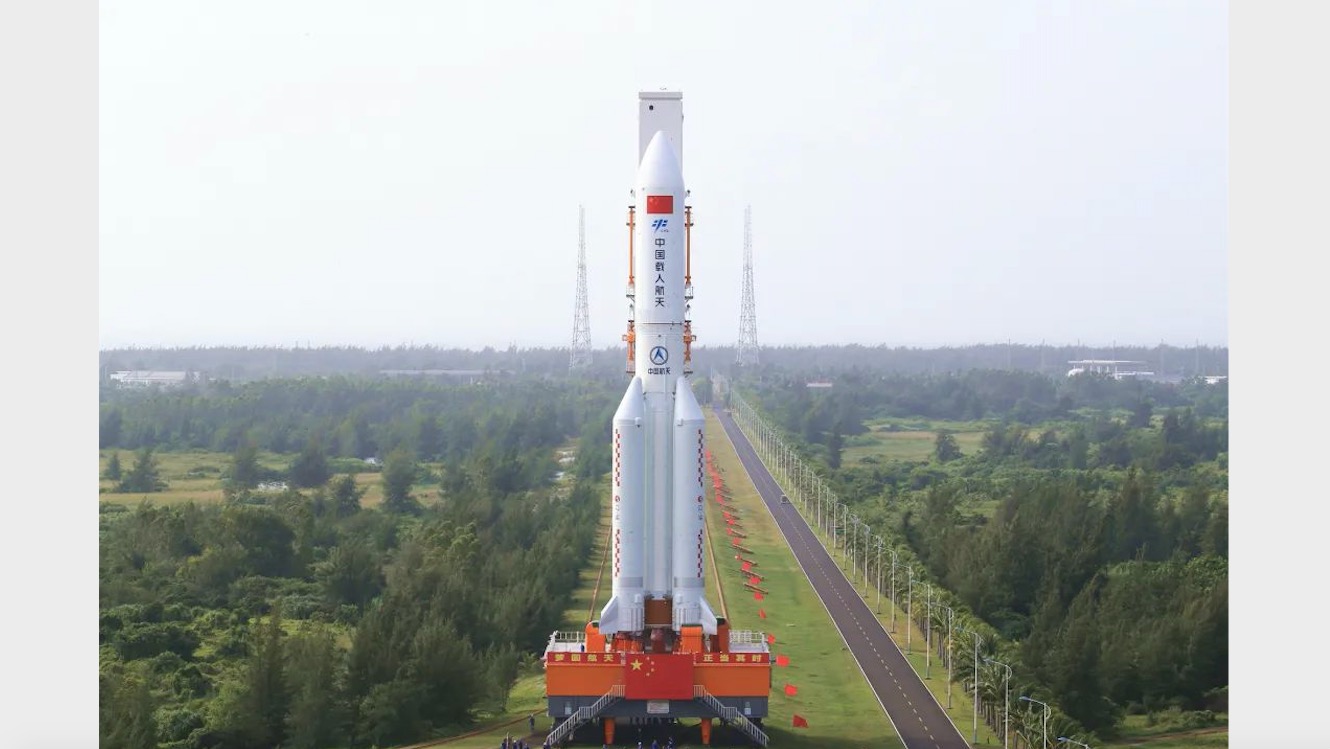China launches final module to complete Tiangong space station (video)
A Long March 5B rocket sent the Mengtian experiment module into orbit on Monday (Oct. 31).
The third and final module has arrived at China's Tiangong space station.
The Mengtian module launched to Earth orbit atop a Long March 5B heavy-lift rocket from Wenchang, south China, at 3:37 a.m. EDT (0737 GMT and 3:37 p.m Beijing time) on Monday (Oct. 31), according to the state-run outlet Xinhua News.
Mengtian arrived at Tiangong as planned about 13 hours after liftoff, according to the China Manned Space Agency.
The launch marked China's ninth space station-related mission since sending the Tianhe core module into orbit in April last year.
Related: The latest news about China's space program

Mengtian, whose name means "Dreaming of the Heavens," is a 58.7-foot-long (17.9 meters) and roughly 48,500-pound (22 metric tons) spacecraft designed mainly to host an array of science racks and experiments.
Equipment installed on board Mengtian will be used for experiments related to microgravity, fluid physics, materials science, combustion science, fundamental physics and more.
Get the Space.com Newsletter
Breaking space news, the latest updates on rocket launches, skywatching events and more!
The docking of Mengtian with Tiangong marks the end of the space station's assembly phase and the start of full operations, Chinese space officials have said. Mengtian's arrival allows China to realize a vision for a space station approved way back in 1992.
The Tiangong space station consists of Tianhe, Mengtian and a module called Wentian. The T-shaped Tiangong will host three astronauts for six months at a time, or six crew members for a brief time during crew handovers.
Tiangong's first crew handover is expected before the end of the year when the ongoing Shenzhou 14 mission astronauts welcome aboard the new Shenzhou 15 crew, who will launch on a Long March 2F rocket from the Gobi Desert. Ahead of this, China will launch the Tianzhou 5 cargo mission to Tiangong in November to deliver supplies to support the new crew expedition.
Tiangong has so far hosted three crewed missions, starting with the three-month Shenzhou 12 mission from June to September 2021. The Shenzhou 13 crew launched in October that year, returning to Earth on April 16. Shenzhou 14 astronauts Chen Dong, Liu Yang and Cai Xuzhe have been in orbit since June 5, and have been aboard to receive both the Wentian and Mengtian science modules.
There are also more plans for Tiangong, alongside hosting science programs and official astronauts. The space station will also support a powerful survey space telescope named Xuntian that China plans to launch as soon as late 2023. The Hubble-class observatory will operate in a similar orbit to that of Tiangong, meaning it will be able to dock at the station for refueling, upgrades and repairs.
Meanwhile, China's first astronaut, Yang Liwei, said earlier this year that Tiangong could be opened to tourism in the future.
While China is celebrating the successful launch of Mengtian, there will likely be some degree of fallout from the mission. The huge first stages of the three previously launched Long March 5B rockets have entered orbit and made high-profile uncontrolled reentries around a week after launch. The fiery first stage reentry from the Wentian module launch in July was spotted by onlookers in Malaysia and Indonesia.
The decaying orbit of the latest rocket stage will likely generate international attention.
Editor's note: This story was updated at 6:45 p.m. EDT on Oct. 31 with news of Mengtian's arrival at the Tiangong space station.
Follow us on Twitter @Spacedotcom or on Facebook.
Join our Space Forums to keep talking space on the latest missions, night sky and more! And if you have a news tip, correction or comment, let us know at: community@space.com.

Andrew is a freelance space journalist with a focus on reporting on China's rapidly growing space sector. He began writing for Space.com in 2019 and writes for SpaceNews, IEEE Spectrum, National Geographic, Sky & Telescope, New Scientist and others. Andrew first caught the space bug when, as a youngster, he saw Voyager images of other worlds in our solar system for the first time. Away from space, Andrew enjoys trail running in the forests of Finland. You can follow him on Twitter @AJ_FI.









